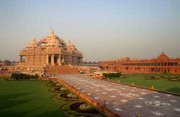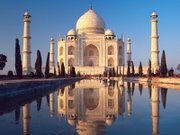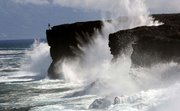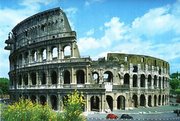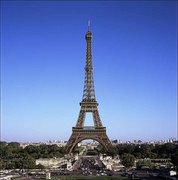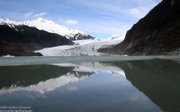 With 12 months to go until the Olympics, the countdown clock is ticking in Beijing. We look at the immense changes and new offerings in the Chinese capital.
With 12 months to go until the Olympics, the countdown clock is ticking in Beijing. We look at the immense changes and new offerings in the Chinese capital.
As the 2008 Olympics draw ever closer, visitors to Beijing can now experience just how important the Games will be - not only for the host city, but for the whole of China. The capital city of a nation steeped in thousands of years of imperial history, Beijing is undergoing one of the world's most comprehensive urban makeovers ahead of the moment at 20:08 on 08.08.2008 when the Olympic flame will be lit in the new National Stadium.
New sporting infrastructure, hotels, retail malls, office towers, roads and subway lines are springing up, and the airport is being completely remodelled and enlarged. At the same time, new restaurants, bars and clubs are creating a vibrant night-time energy.
Old and New Most visitors make a beeline for Tiananmen Square. This cavernous public space is flanked by Beijing's signature municipal buildings: on the west side is the imposing Great Hall of the People, to the east the National Museum of China. To the south is Chairman Mao's mausoleum.
Most visitors make a beeline for Tiananmen Square. This cavernous public space is flanked by Beijing's signature municipal buildings: on the west side is the imposing Great Hall of the People, to the east the National Museum of China. To the south is Chairman Mao's mausoleum.
The centerpiece attraction, however, is located at the north end. The famously expressionless portrait of Chairman Mao marks the entrance to the Forbidden City (website: http://www.dpm.org.cn/). This colossal palace, with more than 800 buildings, was once the exclusive preserve of China's emperors and their courts.
From the steps of this historic symbol, you can also view the shape of Beijing's modernist future. Tucked behind the Great Hall of the People is Paul Andreu's controversial egg-shaped National Theatre, which looks rather dazzling when reflecting the sun's rays.
Beijing's imperial legacy is also showcased at the recently refurbished Summer Palace, a grand retreat from the city's notorious summer heat. Another tourism magnet is the Ming Dynasty-era Taoist Temple of Heaven, once the largest sacrificial temple in China.
For a taste of old-meets-new, Nanluo Guxiang is a charming shopping and dining district in a restored hutong neighbourhood. Among the low-slung lane houses, red lanterns and arched doorways, you'll find cool courtyard cafes, hip bars and artsy stores.
The Games will take place in some of the most spectacular sports arenas ever built. A visit to Olympic Park just north of the city is an enlightening experience. Here you can see the 91,000-seat ‘Bird's Nest' National Stadium, created by architects Herzog & de Meuron, and Australian practice PTW's luminescent ‘Water Cube' Aquatic Centre (website: http://en.beijing2008.cn/cptvenues).
Boutique hotels are also en vogue. Recent openings include Kapok Hotel (website: http://www.kapokhotel.com/), near the Forbidden City, and Côté Cour SL (website: http://www.hotelcotecoursl.com/), in a renovated hutong courtyard. Coming soon is the 80-room Angsana Hotel Beijing, plus new boutique hotels by two of Beijing's classiest restaurants, Face (website: http://www.facebars.com/) and Green T House (website: http://www.greenteahouse.com.cn/).
 For visitors to the Great Wall, staying in style is made easy at Commune by the Great Wall. Located in the Shuiguan Valley, 60km (37 miles) north of Beijing, Commune features 11 uber-eclectic villas by leading Asian architects, an Anantara Spa, café bar - and a private stretch of the Great Wall (website: http://www.commune.com.cn/).
For visitors to the Great Wall, staying in style is made easy at Commune by the Great Wall. Located in the Shuiguan Valley, 60km (37 miles) north of Beijing, Commune features 11 uber-eclectic villas by leading Asian architects, an Anantara Spa, café bar - and a private stretch of the Great Wall (website: http://www.commune.com.cn/).Getting around
Most visitors arrive at the large, modern Beijing Capital International Airport, (website: www.bcia.com.cn/en/index.jsp), which is undergoing extensive upgrading. Next year, a new terminal designed by Lord Norman Foster will be added, as well as a subway link. The journey into the city, by bus or taxi takes around 45 minutes.












